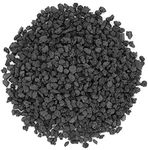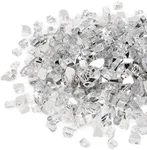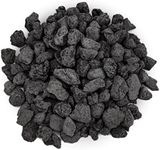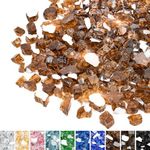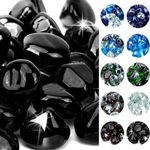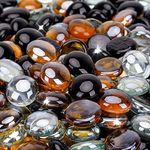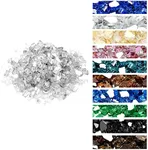Buying Guide for the Best Fire Rocks For Fire Pit
Choosing the right fire rocks for your fire pit is important for both safety and aesthetics. Fire rocks, also known as lava rocks or fire glass, are used to cover the burner in gas fire pits, helping to distribute heat evenly and create an attractive flame. The right choice can enhance the look of your fire pit, improve heat output, and ensure safe operation. When selecting fire rocks, consider the type, size, heat resistance, and color to match your needs and preferences.Type (Lava Rock vs. Fire Glass)The type of fire rock you choose affects both the appearance and performance of your fire pit. Lava rocks are natural, porous stones that provide a rustic look and are excellent at retaining and radiating heat. Fire glass, on the other hand, is made from tempered glass pieces that come in various colors and shapes, offering a modern, sparkling effect. If you want a traditional, earthy feel and efficient heat, lava rocks are a good choice. If you prefer a contemporary look and vibrant colors, fire glass might be better. Your decision should be guided by the style you want for your fire pit and how much you value heat retention versus visual appeal.
Size of the RocksFire rocks come in different sizes, usually measured in inches. Smaller rocks (around 1/4 to 1/2 inch) create a smoother, more uniform surface and can fill gaps more easily, while larger rocks (1 to 2 inches or more) provide a chunkier, more rugged look and allow for better airflow. For most fire pits, a medium size (about 1 inch) offers a good balance between appearance and function. If your fire pit is small or you want a sleek look, go for smaller rocks. For larger pits or a more natural appearance, larger rocks work well. Consider the size of your fire pit and the look you want to achieve when choosing the rock size.
Heat ResistanceHeat resistance is crucial because fire rocks must withstand high temperatures without cracking or exploding. Both lava rocks and fire glass are designed for this purpose, but quality can vary. Always make sure the rocks are specifically labeled as safe for fire pits. Avoid using regular stones or glass, as they can be dangerous when exposed to heat. If you plan to use your fire pit frequently or at high temperatures, prioritize rocks with proven heat resistance to ensure safety and longevity.
Color and AppearanceThe color and appearance of fire rocks can dramatically change the look of your fire pit. Lava rocks are usually black, red, or brown, giving a natural, earthy vibe. Fire glass comes in a wide range of colors, from clear and blue to green and copper, and can add a sparkling effect to the flames. Choose a color that complements your outdoor decor and the mood you want to create. If you want your fire pit to be a focal point, bold or bright colors can stand out. For a more subtle, classic look, stick with natural tones.
Maintenance and CleaningSome fire rocks require more maintenance than others. Lava rocks are generally low-maintenance but can collect soot and debris over time. Fire glass is easy to clean and does not discolor, but it may need occasional rinsing to keep its shine. If you prefer a low-maintenance option, fire glass might be more suitable. Think about how much effort you want to put into keeping your fire pit looking good when making your choice.
